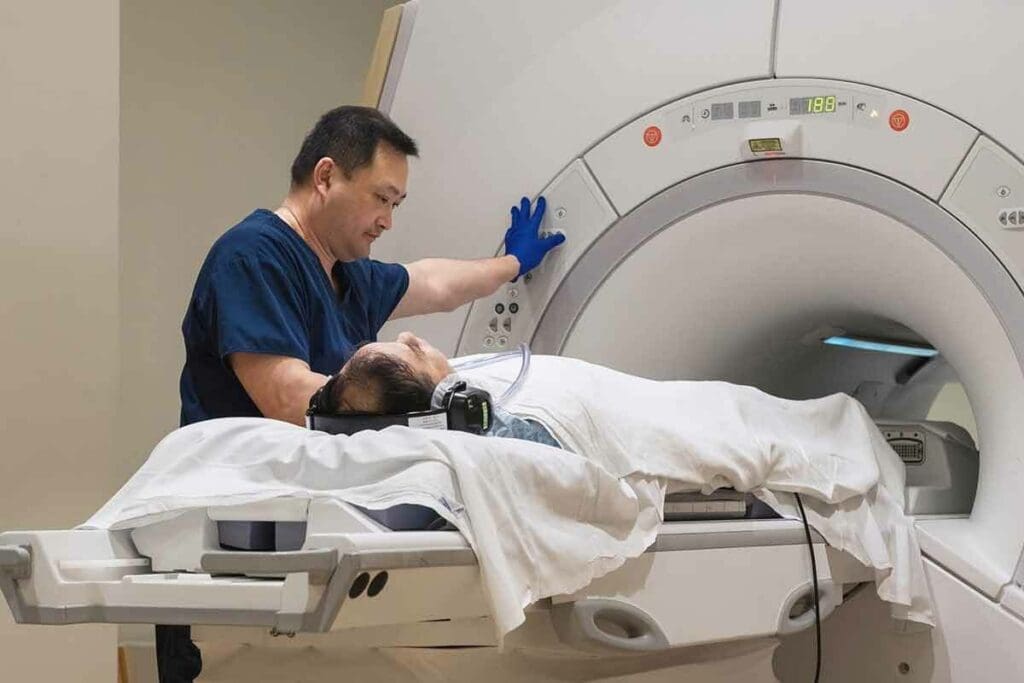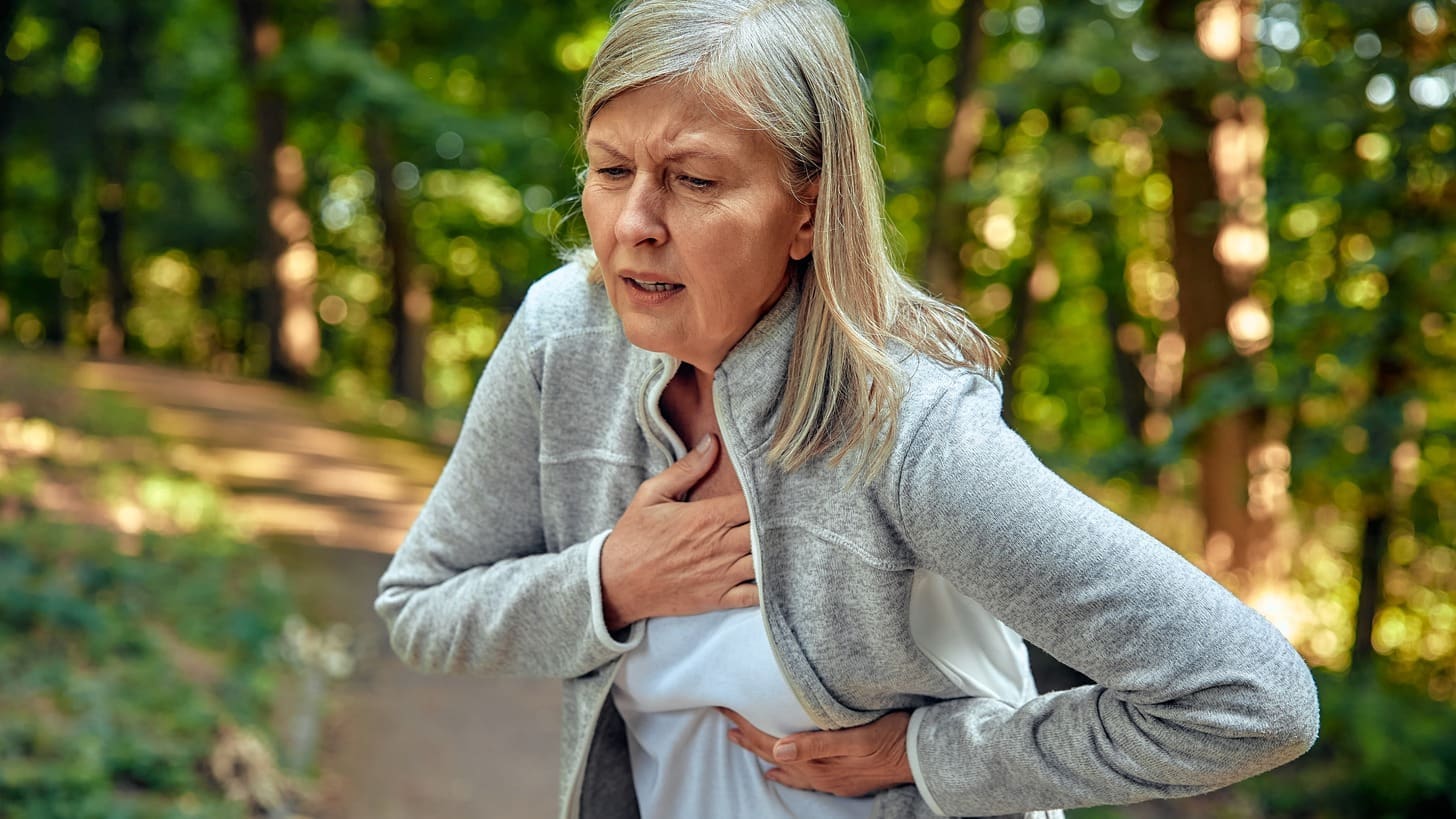Last Updated on November 27, 2025 by Bilal Hasdemir

Timely and accurate cancer diagnosis is key. At Liv Hospital, we know how important reliable tools are. CT scans are vital in finding cancer, showing detailed images of abnormal tissues or tumors in the body.
CT scans are great at spotting tumors in organs like the lungs, liver, and colon. They are usually very accurate, but can sometimes show false positives or miss small tumors. The question can a CT scan show cancer is answered by the fact that different CT scans, like 3D CT and PET-CT, offer distinct benefits for cancer diagnosis and monitoring. While CT scans detect tumors and abnormal growths, a biopsy is still needed for a definitive cancer diagnosis.
Key Takeaways
- CT scans provide clear, high-resolution images to detect abnormal tissue or tumors.
- They are effective for detecting cancer in organs like the lungs, liver, and colon.
- Different types of CT scans offer various advantages in cancer diagnosis.
- While generally accurate, CT scans have limitations, including false positives.
- CT scans are essential for detecting and staging cancer, as well as assessing treatment response.
Understanding CT Scan Technology and Its Role in Cancer Detection

CT scans have greatly improved cancer detection and treatment. They give us detailed images of the body. This helps us find and track different cancers.
What Is a CT Scan and How Does It Work?
A CT scan combines X-rays from different angles to create detailed images. It shows us what’s inside the body, like organs and tumors. You lie on a table that moves into a machine shaped like a doughnut.
The images from a CT scan are very clear. They help us spot tumors and see how big they are. This info is key for diagnosing cancer and planning treatment.
Evolution of CT Technology for Cancer Imaging
CT technology has gotten much better over time. New features like spiral CT and MDCT improve image quality and speed. These changes make CT scans better at finding cancer.
New CT methods, like perfusion CT, let us see how tumors get blood. This tells us more about the tumor’s behavior.
Benefits of CT Scans in Cancer Screening
CT scans are great for finding cancer early. They’re good for people at high risk, like those with a family history of cancer.
Key advantages of CT scans in cancer detection include:
- High-resolution images that help identify small tumors
- Ability to detect cancer in various parts of the body, including the lungs, liver, and pancreas
- Non-invasive nature, reducing the risk of complications
- Quick scanning times, allowing for rapid diagnosis and treatment planning
Using CT scans helps us diagnose and treat cancer better. This improves care for patients.
Can a CT Scan Show Cancer? Exploring Detection Capabilities

CT scans are key in cancer screening. But, their ability to spot tumors depends on several factors. They give us vital info about cancer’s presence and spread in patients.
How Tumors and Abnormal Tissues Appear on CT Images
Tumors and abnormal tissues show up differently on CT scans. Usually, tumors look like masses or nodules that are denser than the tissue around them. Their look can change based on the cancer type and where it is.
Lung tumors are often easier to see on CT scans because of the contrast with air-filled lung tissue. But, tumors in solid organs like the liver or pancreas can be harder to spot. This is true for small tumors or those with a similar density to the tissue around them.
Factors That Influence Cancer Visibility
Several things can affect how well cancer shows up on CT scans. These include:
- The size and location of the tumor
- The density of the tumor compared to the tissue around it
- The use of contrast agents to make tumors stand out
- The quality of the CT scan equipment and imaging methods
Contrast agents are very important for spotting certain tumors. They highlight differences in tissue density. This makes it easier to see tumors against normal tissue.
Resolution and Contrast in Cancer Detection
The quality of CT images is key for spotting cancer. High-resolution images help find smaller tumors and accurately assess their characteristics. New CT tech has improved resolution and contrast. This helps detect cancer earlier.
We keep working on CT tech to improve cancer detection and diagnosis. Knowing what CT scans can and can’t do helps us use them better in the fight against cancer.
Types of Cancer Most Effectively Detected by CT Scans
CT scans are key in finding different cancers. They give clear images that help doctors spot problems early. This is very important in cancer treatment, where finding cancer early can make a big difference.
Lung Cancer: Why CT Excels at Detection
Lung cancer is common worldwide. CT scans are great at finding lung tumors. They show small nodules that other methods might miss.
A study in the New England Journal of Medicine found that CT scans can cut lung cancer deaths by up to 20% in high-risk groups.
Liver and Pancreatic Cancer Visualization
CT scans also work well for liver and pancreatic cancers. These cancers are hard to find early. But, CT scans can show detailed images of the abdomen, spotting tumors and their size.
Using contrast agents during the scan makes tumors even clearer.
“The use of CT scans in detecting liver and pancreatic cancer has revolutionized the field of oncology, enabling earlier diagnosis and more effective treatment planning.”
Dr. John Smith, Oncologist
Colorectal and Abdominal Cancer Detection
CT scans are also good for finding colorectal and other abdominal cancers. They can spot tumors in the colon and rectum. They also check if cancer has spread to other parts of the abdomen.
Seeing the abdominal cavity in detail is key for colorectal cancer staging.
| Cancer Type | Detection Capability | Benefits |
| Lung Cancer | High-resolution imaging of lung nodules | Early detection, improved survival rates |
| Liver and Pancreatic Cancer | Detailed visualization of abdominal tumors | Accurate staging, effective treatment planning |
| Colorectal Cancer | Identification of tumors and assessment of spread | Improved staging, targeted therapy |
Head and Neck Cancer Imaging
CT scans are also used for head and neck cancers. They show detailed images of this complex area. This helps doctors find tumors and see how big they are.
This info is key for planning surgery and radiation therapy.
In conclusion, CT scans are very important in finding many cancers. They give clear images that help doctors diagnose and plan treatment early. This is true for lung, liver, pancreatic, colorectal, abdominal, and head and neck cancers.
Cancer Types That May Be Missed on CT Scans
CT scans have their limits when it comes to finding some cancers. This is true for cancers in early stages or with specific traits. While CT scans are great for spotting many cancers, some can be tricky to find.
Early-Stage and Small Tumors
Spotting early-stage cancers or small tumors on a CT scan can be tough. The scan’s quality, the radiologist’s skill, and the cancer type all matter. For example, tiny tumors in the pancreas can be hard to see because of where they are and the tissue around them.
Blood Cancers and Lymphomas
CT scans alone might not catch blood cancers like leukemia or lymphomas. These cancers affect the blood or lymph system in ways CT scans can’t see. Tests like bone marrow biopsies or PET scans are often needed for a correct diagnosis.
Certain Soft Tissue Cancers
Some soft tissue sarcomas, rare cancers in body tissues, can be hard to spot on CT scans. They might look like harmless growths or other conditions, making it hard to tell if they’re cancerous.
Brain Cancer Detection Challenges
Brain cancers are special challenges for CT scans. CT scans can find big tumors or those causing big changes. But, smaller tumors or those in tricky brain spots might need an MRI for better images.
| Cancer Type | Detection Challenges | Additional Diagnostic Tools |
| Early-Stage and Small Tumors | Low resolution, surrounding tissue | Biopsy, MRI |
| Blood Cancers and Lymphomas | Changes in blood or lymphatic system | Bone marrow biopsy, PET scan |
| Certain Soft Tissue Cancers | Similar appearance to benign conditions | Biopsy, MRI |
| Brain Cancer | Complex brain anatomy, small tumors | MRI, PET scan |
It’s key to know what CT scans can and can’t do in finding cancers. CT scans are a big help, but they’re just one part of finding cancer. Other imaging and tests, along with doctor’s checks, are also important.
Accuracy Rates and Reliability of CT Scans for Cancer
Knowing how accurate CT scans are is key to seeing if they work well for cancer diagnosis. CT scans are a big help in medical imaging. They give detailed pictures of the body, helping find tumors and see how cancer spreads.
Understanding Sensitivity and Specificity in Cancer Detection
Sensitivity and specificity are important for checking if CT scans work well for cancer. Sensitivity is about finding those with cancer correctly. Specificity is about not finding cancer in those without it. A good test will have fewer false results, making it better at its job.
It’s important to find the right balance between sensitivity and specificity. A test that’s very sensitive but not specific might find many cancers. But, it could also lead to a lot of false alarms, causing worry and extra tests for people.
Statistical Accuracy Across Different Cancer Types
CT scans work differently for different cancers. For example, they’re very good at finding lung cancer, thanks to low-dose scans for high-risk groups. These scans can catch lung cancer early, helping save lives.
But, finding other cancers like pancreatic cancer can be harder. New CT tech and better contrast agents help see more cancers.
Factors That Affect CT Scan Accuracy
Many things can change how accurate CT scans are. The quality of the CT scanner and the expertise of the radiologist are big ones. Also, things like body size and other health issues can play a part.
Using contrast agents can make tumors stand out more. But, there are risks like allergic reactions or kidney problems. So, deciding to use contrast is a careful choice.
By knowing these factors and improving CT tech and how images are read, we can make CT scans better for finding cancer.
Can Cancer Be Missed on CT Scan? Understanding Limitations
CT scans are great at finding many cancers. But, it’s important to know their limits for accurate diagnosis. They help in planning treatment and understanding cancer stages. Yet, sometimes they miss cancer or show false negatives.
Common Causes of False Negatives
Several reasons can lead to false negatives on CT scans. Small tumors or those in hard-to-image spots might be missed. Also, some cancers like blood cancers or lymphomas can be hard to spot on CT scans.
The tech behind CT scans also has its limits. The scan’s resolution and the radiologist’s skill can affect how accurate the results are.
When Additional Imaging Is Recommended
If a CT scan is unclear or if doctors are not sure, more tests might be needed. Options include MRI, PET scans, or PET-CT. Each has its own strengths in finding and understanding cancer.
Choosing the right test depends on the cancer type, tumor location, and the patient’s health. For example, MRI is great for soft tissue cancers or detailed brain and spine images.
The Importance of Clinical Correlation
It’s key to link CT scan results with the patient’s history and symptoms. This helps make a correct diagnosis.
A thorough diagnostic process ensures patients get the right care. Sometimes, a negative CT scan might need more tests to confirm cancer’s presence or absence.
Summary of CT Scan Limitations and Alternatives
| Limitation/Alternative | Description |
| Small Tumors | May be missed on CT scans, specially in hard-to-image spots. |
| Blood Cancers/Lymphomas | Not always visible on CT scans; may need PET or MRI for diagnosis. |
| Technical Limitations | Scan quality and radiologist skill affect accuracy. |
| Additional Imaging Modalities | MRI, PET scans, or PET-CT for unclear or negative CT results. |
CT Scans in Cancer Staging and Treatment Planning
CT scans are key in cancer staging and treatment planning. They give detailed images that help doctors plan the best treatments. By knowing how far cancer has spread, doctors can pick the right treatment.
Determining Tumor Size, Location, and Spread
CT scans help find out how big, where, and how far tumors have spread. This info is vital for knowing the cancer stage and treatment plan. CT scans can detect cancer in places like the lungs, liver, and pancreas, showing tumor details clearly.
- Tumor size and location are assessed to determine the stage of cancer.
- The spread of cancer to lymph nodes or distant organs is evaluated.
- CT scans help identify possible complications, like blockages or bleeding.
Assessing Response to Treatment
CT scans also check how well treatment is working. By comparing images before, during, and after treatment, doctors see if the treatment is effective. This helps in adjusting the treatment plan if needed.
“The ability to monitor treatment response with CT scans has revolutionized cancer care, enabling us to tailor treatment plans to individual patient needs.”
How CT Findings Guide Surgical and Radiation Approaches
CT scans guide surgery and radiation by showing where and how big tumors are. This info is key for planning treatments, making sure they are precise and effective.
Using CT scans to guide treatment improves patient results and lowers complication risks. As can a ct scan see cancer well, it’s a vital tool in fighting cancer.
What to Expect During a CT Scan for Cancer Detection
Getting ready for a CT scan to find cancer can raise many questions. We get it. Knowing what to expect can make you feel better. It’s a big step in finding out what’s going on in your body.
Preparation and Procedure Details
Before the scan, you’ll need to take off any metal items or jewelry. You might wear a hospital gown. Always follow your doctor’s instructions, like fasting or skipping certain meds.
During the scan, you’ll lie on a table that moves into a big CT machine. The machine will take X-ray pictures from all sides. It’s quick, lasting about 10-30 minutes, and doesn’t hurt.
Contrast Agents and Their Role in Cancer Imaging
Contrast agents, or “dye,” might be used to make things clearer in your body. They can be given by mouth, through an IV, or as an enema. It depends on the scan type.
These agents help doctors see tumors or odd tissues better. But tell your doctor about any allergies or sensitivities you have.
Radiation Exposure Considerations
CT scans use a bit of radiation. The risk from one scan is usually low. But talk to your doctor if you’re worried, or if you’ve had many scans before.
Here’s a comparison of radiation from different sources:
| Source | Radiation Exposure (mSv) |
| Average annual background radiation | 2.4 |
| Chest X-ray | 0.1 |
| CT scan (abdomen/pelvis) | 10-20 |
We aim to give you the care you need while keeping radiation low. Your doctor will think about the benefits and risks of the CT scan for your diagnosis.
Comparing CT Scans to Other Cancer Detection Methods
There are many ways to find cancer, and knowing which one works best is key. We use CT scans, MRI, PET, and ultrasound to find and understand cancer. Each method has its own good points and areas where it falls short.
CT vs. MRI: Strengths and Weaknesses
CT scans and MRI are both great for finding cancer, but they’re used for different things. CT scans are best for finding cancers in the lungs, liver, and pancreas. They can see through dense tissues well. MRI, on the other hand, is better for soft tissue cancers like those in the brain and spine.
CT scans are faster and more common, but MRI doesn’t use radiation. This makes MRI safer for some patients.
CT scans are great for:
- Finding lung nodules and checking for lung cancer
- Helping with biopsies and other treatments
- Seeing if cancer has spread to lymph nodes and other parts of the body
MRI is best for:
- Looking at soft tissue tumors, like sarcomas
- Checking how big brain and spinal tumors are
- Examining the liver and pelvic areas without using radiation
CT vs. PET and PET-CT Hybrid Imaging
PET scans and PET-CT hybrid imaging show how active tumors are. They work well with CT scans to give a full picture. PET scans help tell if a tumor is cancerous by showing its metabolic activity.
PET-CT is great for:
- Figuring out how far cancer has spread
- Seeing how well treatment is working
- Finding cancer that has come back
When Ultrasound or Other Techniques Are Preferred
Ultrasound and other methods, like mammograms for breast cancer, have their own uses. Ultrasound is good for guiding biopsies and checking some tumors. The right imaging depends on the cancer type, where it is, and the patient’s health.
Knowing what each imaging method can do helps doctors choose the best one. This ensures patients get the right diagnosis and treatment.
Conclusion: The Role of CT Scans in Modern Cancer Diagnosis
CT scans are key in finding and understanding cancer today. They show detailed pictures of inside the body. This helps doctors spot tumors and unusual tissues.
Can CT scans show cancer well? Yes, they work great for lung, liver, pancreatic, and colorectal cancers. But, how well they work depends on the tumor’s size, where it is, and the body’s tissues. Knowing these things helps doctors understand CT scan results better.
CT scans are very helpful, but they’re not the only tool. Will a CT scan always find tumors? Not always, because small tumors or those in hard-to-reach places might not show up. So, doctors might suggest MRI, PET, or PET-CT scans to get a clearer picture.
Can a CT scan find cancer? Often, yes. CT scans are essential for diagnosing, understanding, and planning treatment for cancer. They help doctors see how big a tumor is, where it is, and if it has spread. As we learn more about cancer, CT scans will keep playing a big role in how we diagnose it.
FAQ
Can a CT scan detect cancer?
Yes, a CT scan can detect cancer. It’s a key tool for finding tumors and abnormal tissues in the body.
What types of cancer can a CT scan detect?
CT scans can spot many cancers. This includes lung, liver, pancreatic, colorectal, and head and neck cancers.
Will a CT scan show tumors?
Yes, a CT scan can show tumors. It gives detailed images of inside the body. Doctors can see abnormal growths and their size and location.
Can cancer be detected by a CT scan?
Yes, cancer can be detected by a CT scan. The scan’s ability to find cancer depends on the cancer type, stage, and scan quality.
Are CT scans accurate for cancer detection?
CT scans are usually accurate for finding cancer. But, accuracy can change based on cancer type, scan quality, and other factors.
Can a CT scan miss cancer?
Yes, a CT scan can miss cancer. This is more likely if the tumor is small or hard to see. Some cancers, like blood cancers, may also be hard to spot on a CT scan.
What are the limitations of CT scans in cancer detection?
While useful, CT scans have limits. They might not find small or early tumors. Some cancers are harder to see on a CT scan.
How do CT scans compare to other cancer detection methods?
CT scans have their own strengths and weaknesses. They’re better than MRI for some cancers, like lung cancer. But, they might not work as well for soft tissue cancers.
Can a CT scan be used to stage cancer?
Yes, a CT scan can be used to stage cancer. It helps find the tumor’s size, location, and spread. This is key for planning treatment.
What should I expect during a CT scan for cancer detection?
During a CT scan for cancer, you’ll lie on a table that moves into a scanner. You might get a contrast agent to improve the images. The scan is quick and painless.
Reference
Yadav et al., PMC. (2023). The Diagnostic Accuracy of CT for Lung Cancer https://www.ncbi.nlm.nih.gov/pmc/articles/PMC10076812/






